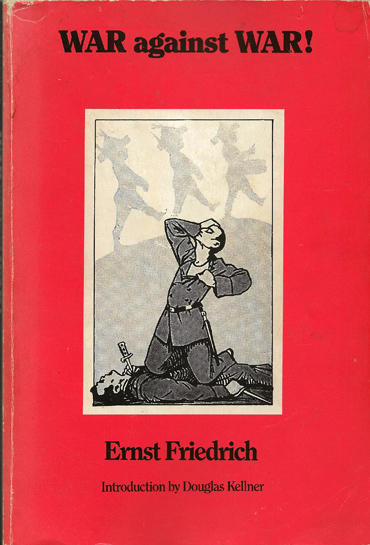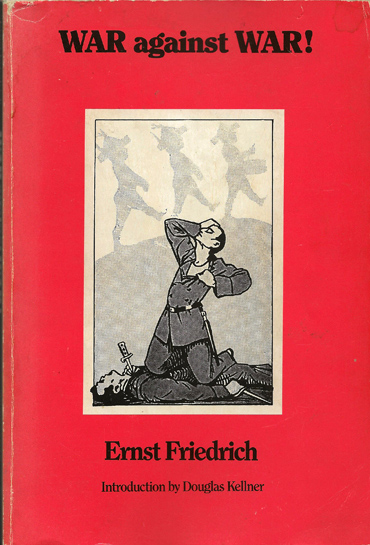Ernst Friedrich
Ernst Friedrich was born in 1894 in Wrocław as the youngest of thirteen children of a laundress and a saddler. He studied to become a printer but did not finish his printer apprenticeship and started working in a factory as a manual worker. In 1911 he joined the Social Democratic Party of Germany but quickly left the party when it officially supported the taking out of war loans. As a close friend of Karl Liebknecht he often worked with trade unions and was a well-known and important person in the anarchist community. In 1919, he took control by force of the Freie Deutsche Jugend (Free German Youth) centre in Berlin and converted it into a meeting place for revolutionary artists and young people with an anti-authoritarian mindset. He also launched travelling anti-war exhibitions and organized public readings of texts written by Maxim Gorki, Fyodor Dostoevsky and Lev Tolstoy.
Krieg dem Kriege and the Anti-Kriegs-Museum
In 1924 Friedrich published an album entitled Krieg dem Kriege (War Against War) containing more than 180 photos acquired from the German military and medical archives. This anti-war publication which used photography as a medium to expose the readers to shock therapy and condemn the barbaric war ideology quickly attracted the attention of the authorities. Soon after being published, it was entered on the list of prohibited books. As a result, in many cities the police attacked bookstores and destroyed all copies of the book and public display of the photographs from Krieg dem Kriege was subject to a fine.
In 1925, in continuation of the efforts to enact his pacifistic vision, Ernst Friedrich opened the Anti-kriegsmuseum (Anti-War Museum) in Berlin, at 29 Parochialstrasse where he presented photos from his album in addition to a handful of objects related to the cult of war. In a book published ten years after the opening of the museum entitled Vom Friedens-Museum zur Hitler-Kaserne (From the Peace Museum to Hitler’s Barracks), Friedrich describes the construction process of the museum with the help of a befriended builder using materials bought on credit in a nearby shop. But most likely, the situation was actually less dramatic: Friedrich received financial support from his family who owned a number of shops in Berlin, a fact he was rather reluctant to mention. He preferred to see and describe himself as a fearless lonely hero ready to overcome all adversities.
Persecution and emigration
Ernst Friedrich was also a publisher of anarchist texts. His newspaper called the Schwarze Fahne (Black Flag) published articles with bold titles, like for instance Noske: Laughter of the Murderer (Gustav Noske was the first Minister of Defence in the Social Demicrat Government after WW1). No wonder that Friedrich’s activities was perceived by the German authorities as acts of political hostility and Friedrich himself was regularly brought before the court, fined and imprisoned. The windows of the museum which quickly became a meeting place of many activists and pacifists were often broken and the exhibited photos were torn off the walls.
In 1933, a Nazi SA unit attacked the museum, destroyed the exhibits and arrested Friedrich. After release, Friedrich decided to leave the country taking the entire museum archive with him. In 1936 in Belgium where he was granted asylum, Friedrich opened another Anti-War Museum which was destroyed by Germans in 1940. After the war, Friedrich tried to persuade the German government to finance the opening of a new museum against war but to no effect. In 1955, he emigrated permanently to France where he bought on credit an island on a river right outside of Paris which he called Ile de la Paix (The Peace Island). Till the end of his life he organized there educational meetings for young people devoted to the subject of war and peace. He died in 1967 and as he did not repay the whole value of the loan, upon his death the island was sold and the ownership documents were destroyed. Tomas Spree, Ernst Friedrich’s grandson, reopened the Anti-Kriegs-Museum in Berlin in 1992 where it exists to date.
The pictures come from the book Krieg dem Kriege and from the museum’s website at http://www.anti-kriegs-museum.de/.




